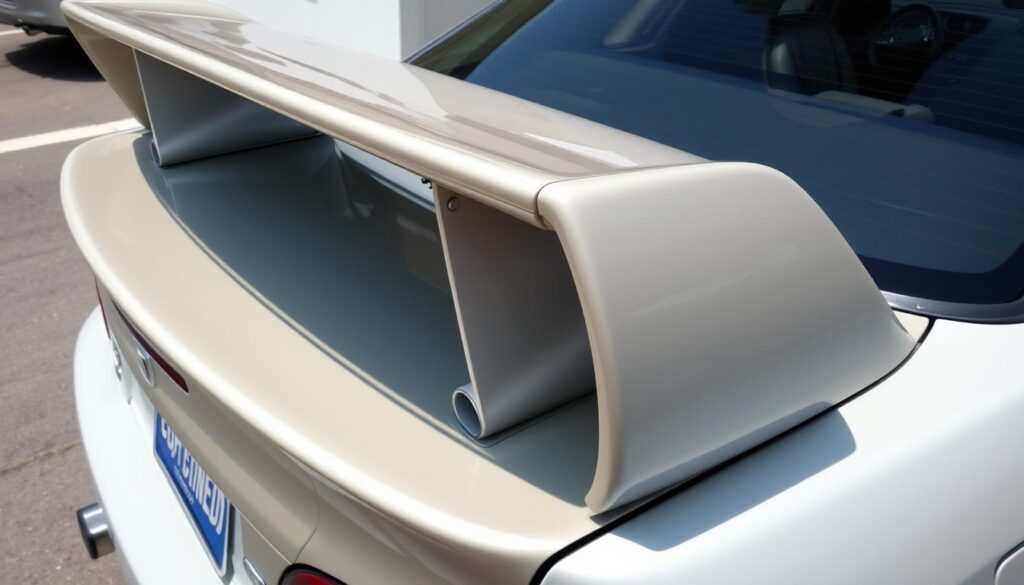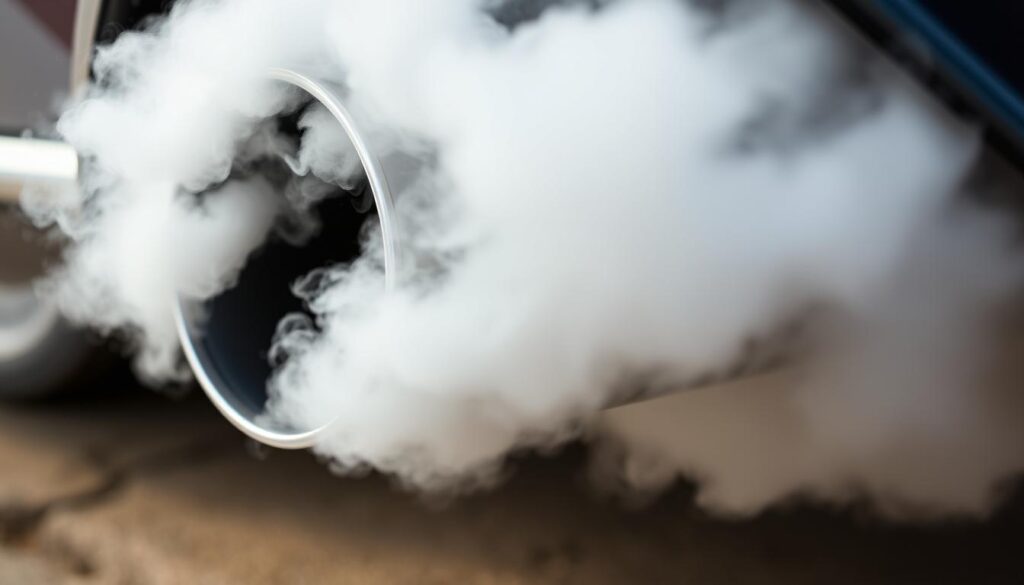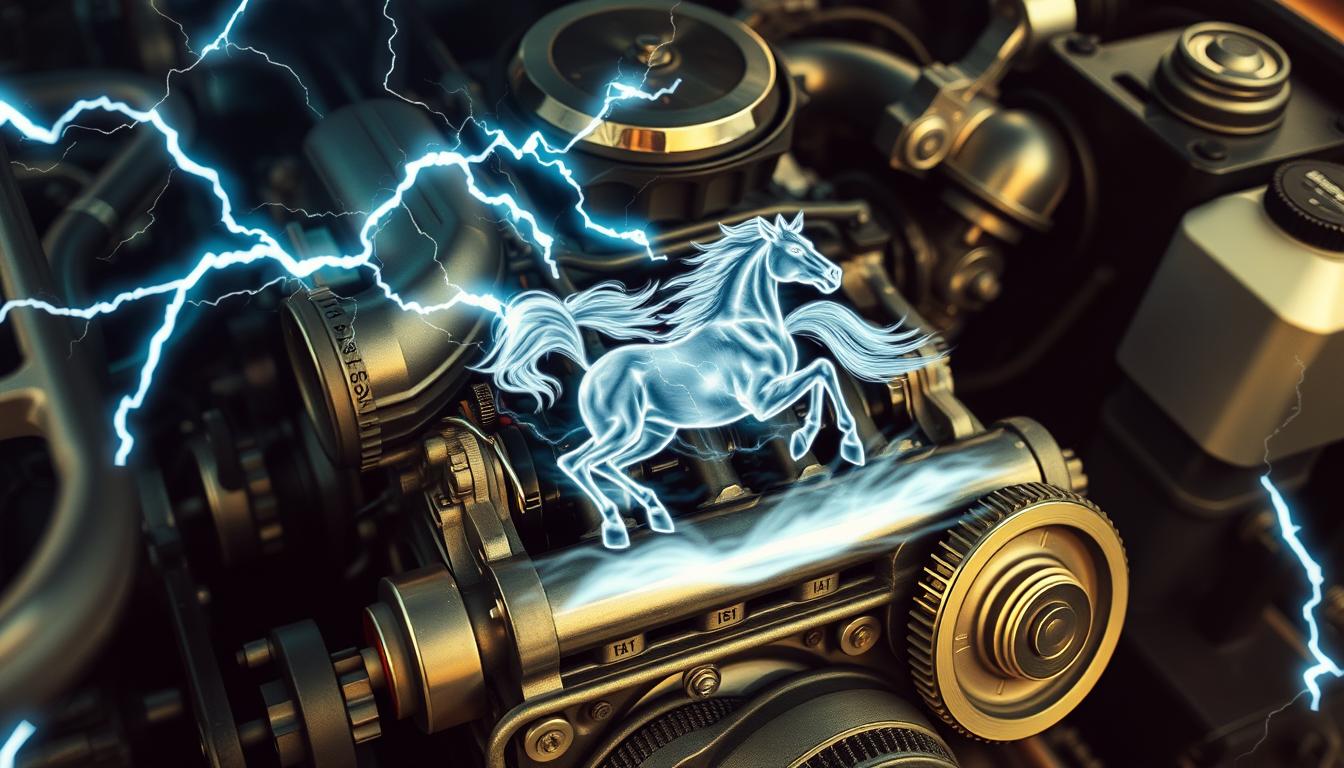Have you ever pushed the gas pedal, only to feel your car lag? You’re in good company. People across the globe strive to boost their car’s power. It makes the drive thrilling and satisfying. Fortunately, enhancing horsepower doesn’t have to be expensive. This guide will show affordable ways to up your car’s game without being a mechanic pro. By making small changes, significant improvements can be seen. It’s about unlocking your vehicle’s true potential.
Key Takeaways
- Upgrading air intake enhances horsepower for modern throttle-body systems.
- Cold-air intakes reduce turbulence and increase performance.
- A less restrictive exhaust system improves airflow, boosting horsepower.
- Performance tuners can add considerable power with easy installation.
- Regular maintenance is key to maximizing the effectiveness of power upgrades.
Understanding Horsepower and Its Importance
Horsepower is key for people who love cars and want to know about vehicle performance. It tells us how strong an engine is. This measures the engine’s ability to do work, which is crucial for car specs.
What is Horsepower?
Horsepower measures engine power. It’s the power to lift 550 pounds a foot in a second. Or to move 33,000 pounds a foot in a minute. A higher horsepower means the engine works more efficiently. This info helps you choose or upgrade cars for better power.
The link between engine size (CC) and horsepower is complex. It depends on engine design, tuning, and fuel type. A bigger engine usually has more horsepower, but it’s not always true. To find horsepower, you multiply torque by engine speed and divide by 5252. This shows how torque and speed tell you about your car’s power.
The Historical Origins of Horsepower
James Watt, an inventor, introduced the term “horsepower”. He wanted to compare steam engines to horses’ power. This history helps us understand the term’s importance in car technology.
| Year | Model | Horsepower (Gross/Net) |
|---|---|---|
| 1950 | Chevrolet “Stovebolt” Six | 92 hp / 85 hp |
| 1955 | Chevrolet 265 V8 | 162 hp / 137 hp |
| 1965 | Chevrolet 396 V8 (Corvette) | 425 hp |
| 1969 | Pontiac GTO Judge | 370 hp |
| 1970 | Cadillac Eldorado | 400 hp / 235 hp (1971) |
Learning the history of horsepower shows us how engines have advanced. It shows the big impact of these advancements over time. In the past, horsepower was measured by the number of horses required to do the same work as the engine. As engines have evolved, they have become more powerful and efficient, achieving almost limitless fuel efficiency in some cases. This evolution has revolutionized transportation and industry, making it possible to achieve feats that were once unimaginable.
Common Misconceptions About Increasing Horsepower
There are many myths about horsepower increase that confuse car lovers. Some upgrades are expensive, but there are also cost-effective horsepower enhancements. With the right info, you can boost your car’s power affordably. Also, remember to consider emissions laws. Not doing so could hurt your car’s performance and get you in legal trouble.
Why More Power Doesn’t Always Mean Bigger Budget
Many believe you must spend a lot to get more horsepower, but that’s not true. There are plenty of cost-effective horsepower enhancements that don’t break the bank. Simple changes, like better air intake or fuel, can make a big difference without major costs. These affordable options can provide big benefits but are often ignored.
Understanding Emissions Regulations and Their Impact
Learn about your area’s emissions regulations before modifying your car. Ignoring these rules can cause problems, like failing emissions tests, and lead to costly repairs. Using parts that don’t comply can also worsen your car’s performance. Knowing about emissions laws helps protect your car and keeps your upgrades legal and effective.

| Modification Type | Cost-Effectiveness | Impact on Horsepower | Emissions Compliance |
|---|---|---|---|
| Upgraded Air Intake | Moderate | Low to Moderate | Variable |
| High-Performance Exhaust | High | Moderate to High | Depends on Design |
| Performance Tuners | Low | High | Variable |
| Fuel System Enhancements | Moderate | Moderate | Depends on Parts Used |
Upgrading the Air Intake
Boosting your car’s air intake system boosts engine performance. A top-notch intake system helps your car take in more air. This means more horsepower and better fuel efficiency. Since engines need air to work, getting more air in makes them more powerful.
The Benefits of Cold-Air Intakes
Installing a cold-air intake is a big win. It’s designed to tackle airflow limits of standard intakes. This lets cooler, heavier air get to your engine. That leads to stronger combustion and more power.
People who add one often feel a boost in horsepower and torque, especially when revving high. A product like the Racing Beat intake can really up your car’s power. It’s proven by its success in many car models.
How Airflow Affects Engine Performance
Knowing how air moves in an engine helps you choose the best upgrades. Improving airflow can make fuel mixtures more stable and boost your car’s power. Adding performance parts works best with the right engine tuning.
A cold-air intake not only changes the air’s route; it revamps your engine’s working condition. This can make the car quicker and more nimble. Optimizing air can up your peak horsepower by up to 3%, making drives much more exciting.

| Modifications | Horsepower Gain | Torque Improvement | Estimated Cost |
|---|---|---|---|
| Cold-Air Intake | Up to 10 HP | 5-8 ft-lbs | $200-$400 |
| Performance Tune | 3% Increase | Varies | $300-$600 |
| Racing Beat Intake (1.6L Miata) | Approx. 6 HP | Improved throttle response | $300 |
Upgrading the Exhaust System
An exhaust system upgrade boosts your vehicle’s performance significantly. A key upgrade is the cat-back exhaust system when you’re after more horsepower. It enhances exhaust flow and cuts down on backpressure, offering several advantages.
The Impact of Cat-Back Exhausts on Horsepower
Opting for a cat-back exhaust system means you’re changing parts from the catalytic converter to the tailpipe. Such systems have bigger pipes which improve exhaust flow. This lets your engine get rid of gases quicker, giving you more power. While installation costs differ, the gains, especially when paired with a cold-air intake, are compelling, adding up to 10 horsepower.
Understanding Exhaust Flow Dynamics
Knowing how exhaust flow works is key to a successful upgrade. Lightweight, mandrel-bent tubing ensures smooth gas exit. Plus, different mufflers like chambered and turbo-style add performance and sound benefits. For instance:
- Chambered Mufflers: They manage sound and pressure, ranging from quiet to loud.
- Turbo Mufflers: These use S-pattern tubes for better sound control.
- Straight-Through Mufflers: They’re all about maximizing flow.
Choosing the right parts is essential for matching your vehicle’s needs and your goals. A quality cat-back exhaust boosts horsepower and makes driving more enjoyable.

| Muffler Type | Noise Level | Flow Characteristics | Common Use |
|---|---|---|---|
| Chambered | Variable | Moderate | Street |
| Turbo | Moderate | High | Performance |
| Straight-Through | High | Very High | Racing |
Making an educated choice on your exhaust update ensures you match your car’s power potential well.
Performance Tuners: The Easy Power Boost
Performance tuners, often called chips, give car lovers a simple way to boost horsepower. These gadgets link to your car’s diagnostic port. This allows tweaks to fuel and timing settings. The outcome? You might see a horsepower jump by 50 to 200 hp, especially for diesel engines.
Setting up is usually pretty easy, taking just 10 to 15 minutes. Many see a better performance. For example, a COBB Stage 1 tune raised a Ford EcoBoost Mustang’s power from 263 to 267 horsepower. Tuners may also help with gas mileage. The GTE Stage 1 Performance Chip, for instance, increased fuel efficiency up to 4 mpg in the right conditions.
Here’s a comparison of performance tuners on popular models:
| Performance Tuner | Horsepower Increase | Torque Increase (ft-lbs) | MPG Improvement | Installation Time |
|---|---|---|---|---|
| GTE Stage 1 Chip | 35+ hp | 6 ft-lbs | Up to 4 mpg | 10-15 minutes |
| COBB Stage 1 Tune | 4 hp | 64 ft-lbs | N/A | 10-15 minutes |
However, tuning your car can have drawbacks, like transmission issues under hard use. Also, engines may not last as long after modifications. GM suggests that unaltered vehicles typically outlast modified ones. Yet, the latter brings more excitement and better performance.
In the end, performance tuners offer an appealing choice for easy horsepower gains. With the right install and care for your vehicle, these tuners can make driving a lot more fun.

This One Weird Trick Will Double Your Horsepower!
To boost your vehicle’s performance, implement some simple car maintenance practices. Combine these with thoughtful modifications. Ensuring proper oil levels, replacing filters, and sticking to service intervals can greatly improve horsepower. With these maintenance tasks as routine, your engine’s performance can reach its peak.
Implementing Simple Maintenance for Optimal Performance
Simple car maintenance is key for a car’s lifespan and horsepower. Cleaning the fuel system, for example with AMSOIL P.i. Performance Improver, is crucial. This can significantly increase performance. In tests, a 2016 Chevrolet Silverado with over 100,000 miles saw a 14% boost. Using synthetic motor oil and lubricants reduces friction, boosting power. This ensures your engine runs at its best, ready for any upgrades.
Combining Modifications for Maximum Impact
For more horsepower, mixing modifications has a powerful effect. Adding a cold-air intake increases airflow, bringing in denser air. This prompts your engine’s computer to optimize the fuel/air mix, leading to greater power. Upgrading to high-flow exhaust systems or performance tuners can add 50 to 200 hp. This significantly boosts your vehicle’s performance. By combining modifications, it’s like doubling your engine’s power, offering superior performance with smart investments.

Boost Controllers and Forced Induction
Boost controllers are key in getting the most out of your turbo or supercharger. They let you change the air pressure going into your engine. This can greatly increase horsepower and keep your engine safe.
To tweak your car the right way, knowing the difference between turbochargers and superchargers is key. A turbo uses exhaust to spin a wheel and boost power across the engine’s revs. A supercharger, however, is linked to the engine by a belt and boosts power instantly.

Apart from a boost controller, other upgrades can boost your car’s performance. For cooling and efficiency, the Boost Brothers FMIC is a good choice. Bigger injectors, like the TT225 OEM Bosch, help with more fuel flow for more air intake. But, remember, these changes might need a new ECU tune to keep things balanced.
- Intercooler upgrades remove heat from the air going into your engine, which stops knocking.
- Test pipes can up power on a budget, while high flow cats are better for the planet.
- Getting to know turbo lag is important, as it can affect how your car performs.
- With mods, the details count. Stage one and stage one plus upgrades offer different levels of improvement.
If you’re thinking about boosting your engine, be ready for some challenges. More power can mean issues with rods, fuel, and the gearbox. Picking top-notch parts and planning well means you can enjoy the extra power without worry.
Conclusion
Boosting your vehicle’s horsepower can feel overwhelming, but you can achieve it with simple steps. You learned about cold air intake, better exhaust flow, and performance tuners. These can significantly increase your vehicle’s power without hurting your wallet.
When you combine air intake and exhaust improvements with regular maintenance like oil changes, your vehicle’s horsepower can rise noticeably. Careful modifications and upkeep can lead to notable power and efficiency gains. Also, adding performance chips is a savvy way to enhance performance without spending a lot.
To successfully enhance horsepower, having patience and a plan is key. You might choose superchargers for up to a 50% power boost, or maybe turbochargers for a 25% increase. It’s important to keep mods in line with emissions laws. This ensures your vehicle’s enhancements are both effective and legal. Enjoy upgrading your ride and see the amazing transformation!










